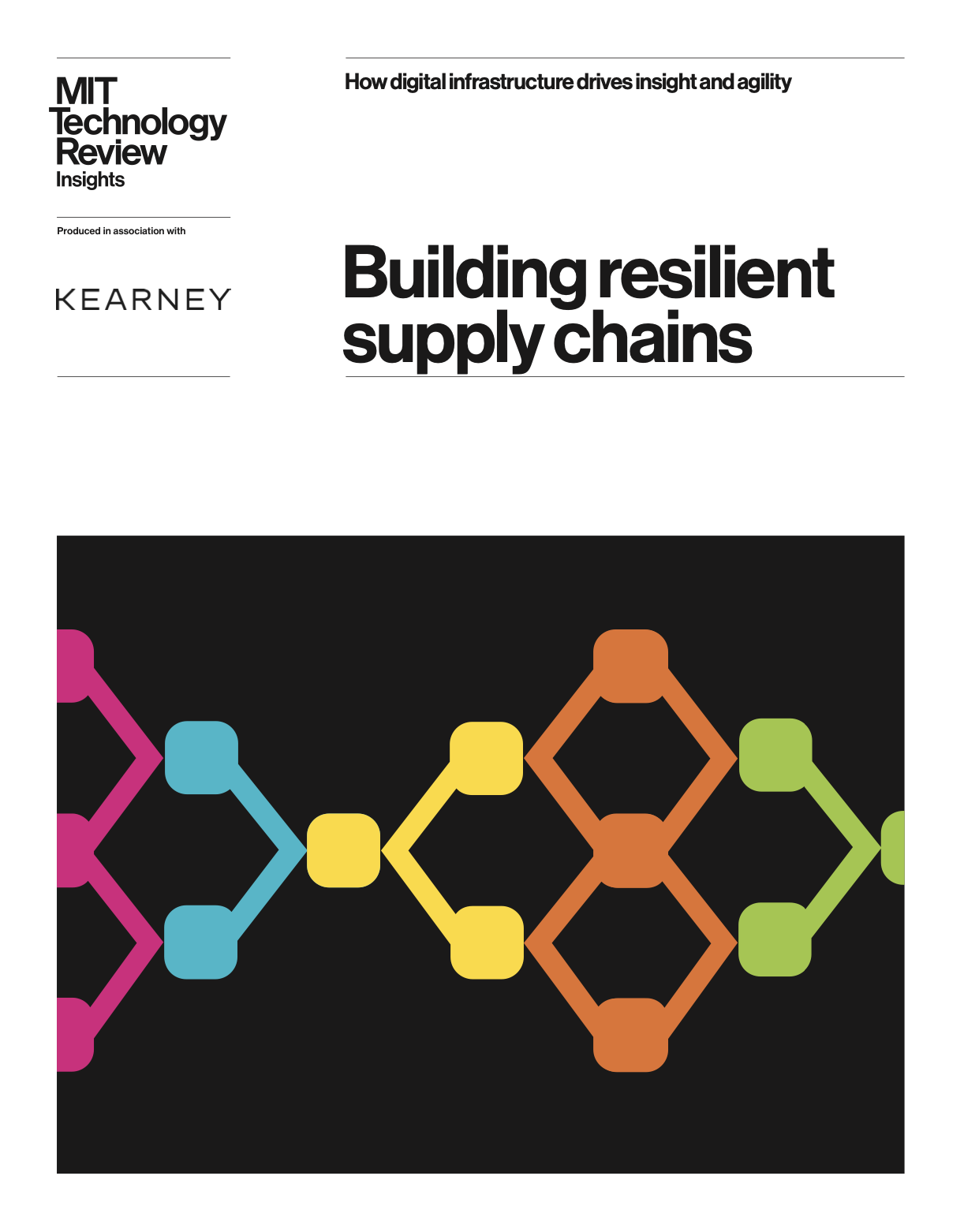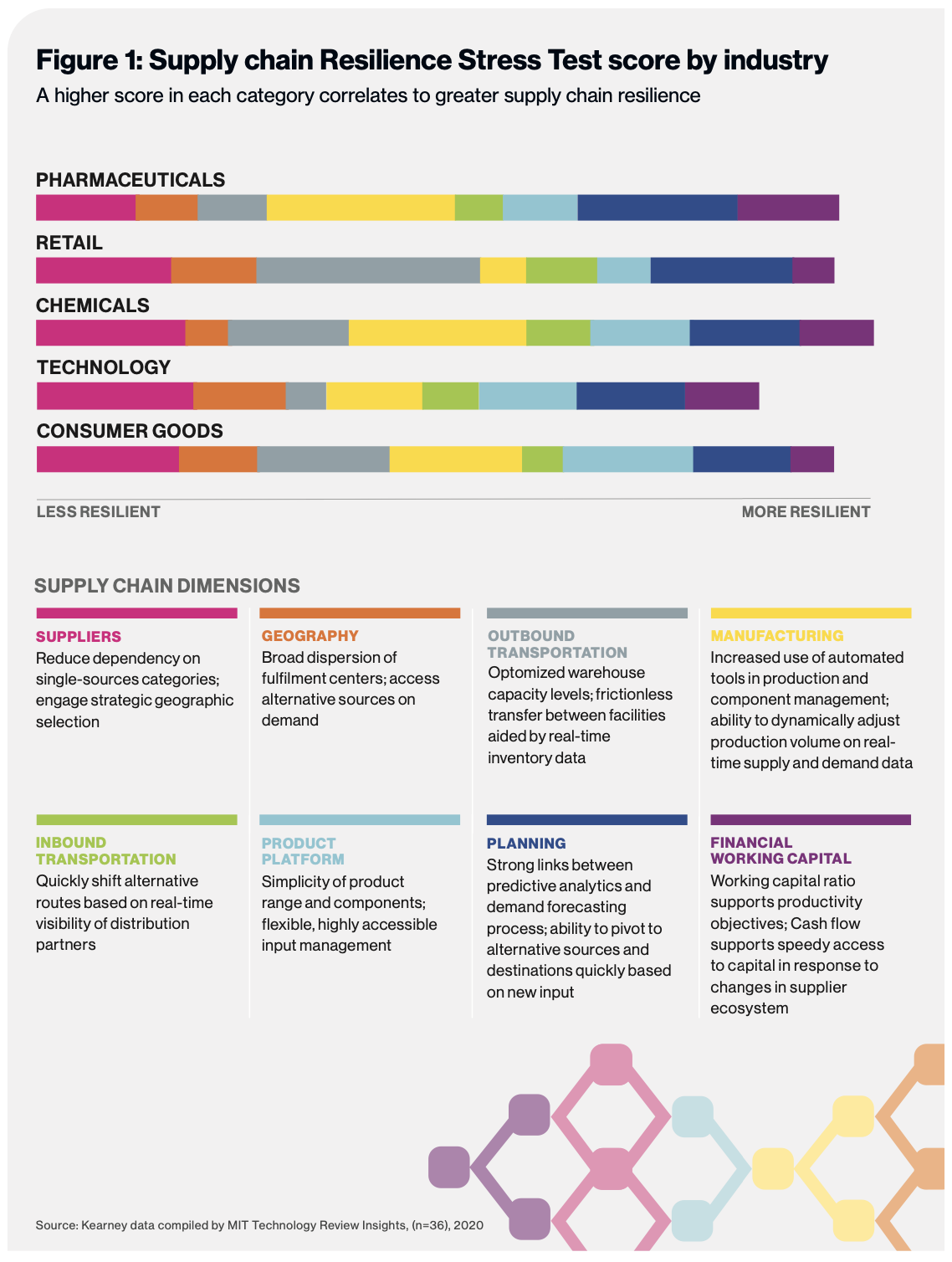Sponsored
Building resilient supply chains
In association withKearney
Turbulent times can expose weaknesses in distribution chains, putting stress on chokepoints and reducing access to critical components, suppliers, and capital. The ability to respond to changes rapidly and effectively depends on a variety of assets and business capabilities: replacing or augmenting supply sources in response to partner inventory issues or trade war-induced tariffs or restrictions, and having agile manufacturing processes that reduce redundancies and streamline product inputs.

Each thread of this complex web of factors that affects supply chain resilience must be examined and assessed separately to identify potential vulnerabilities and mitigate them. At the same time, most of this web simplifies down to two primary strands, common capabilities that run through every resilient business: increasing visibility and maintaining sufficient diversity in the supply chain.
Capability 1—Insight
Developing data capabilities and analysis tools that reach from suppliers and partners all across the value chain through to end customers, allowing companies to anticipate and prevent supply disruptions.
Capability 2—Agility
Being able to quickly mobilize an effective response to disruptions means managing a wide ecosystem of suppliers across all dimensions of the the supply chain.
With digitalization being a key driver of supply chain resilience, companies are seeking approaches to measure and benchmark their digital infrastructure and processes. Kearney’s Resilience Stress Test assesses supply chain resilience across eight dimensions that span a company’s own processes as well as those of suppliers and partners—measuring the degree of critical digitalization in each. These include using IoT sensors in logistics or fulfilment operations, robotic process automation in production or distribution, and analytics and machine learning in production centers, inventory management, and financial capital management.
In using its stress test to analyze and evaluate the supply chain resilience of dozens of global organizations across several verticals, Kearney found that leading practices in each dimension center on an organization’s ability to leverage insight from its tools and management processes and respond with agility, enabled by flexible processes, communication with ecosystem partners, and lean decision-making.
Best practices are found across the entire range of verticals, although there are some capabilities that occur more organically within some organizations than others. Technology and consumer goods companies, for instance, typically have better capabilities in managing supplier complexity. Technology businesses typically develop products and solutions with large arrays of components or supplier inputs, and consumer goods also manage large portfolios of suppliers. Similarly, companies in sectors with traditionally complex and long production processes, such as pharmaceuticals and chemicals, generally earn higher scores in the manufacturing dimension of the framework.

Download the full report here.
This article was written by Insights, the custom content arm of MIT Technology Review. It was not written by MIT Technology Review's editorial staff.
Keep Reading
Most Popular
Large language models can do jaw-dropping things. But nobody knows exactly why.
And that's a problem. Figuring it out is one of the biggest scientific puzzles of our time and a crucial step towards controlling more powerful future models.
The problem with plug-in hybrids? Their drivers.
Plug-in hybrids are often sold as a transition to EVs, but new data from Europe shows we’re still underestimating the emissions they produce.
How scientists traced a mysterious covid case back to six toilets
When wastewater surveillance turns into a hunt for a single infected individual, the ethics get tricky.
Google DeepMind’s new generative model makes Super Mario–like games from scratch
Genie learns how to control games by watching hours and hours of video. It could help train next-gen robots too.
Stay connected
Get the latest updates from
MIT Technology Review
Discover special offers, top stories, upcoming events, and more.